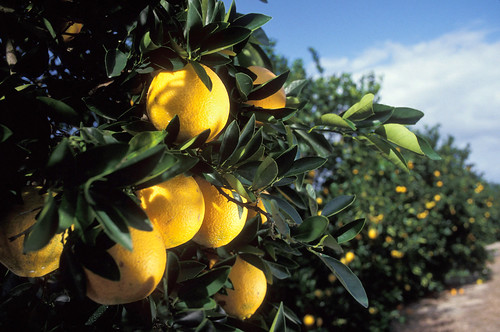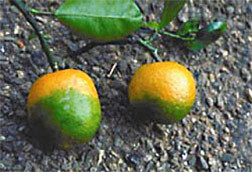
This post is part of the Science Tuesday feature series on the USDA blog. Check back each week as we showcase stories and news from USDA's rich science and research profile.
Kermit the Frog often reminded us that “It’s not easy being green”—but in Florida’s citrus groves, being green isn’t just difficult, it’s downright disastrous.
That’s because oranges that don’t turn orange on the tree when they’re supposed to might be victims of a disease called “citrus greening,” also known as Huanglongbing, or HLB. Citrus greening is especially devastating because it makes the juice bitter, so the fruit isn’t even suitable for juicing, let alone the fresh market.

But Agricultural Research Service (ARS) scientists have found that the same bitter juice that causes despair among growers could yield invaluable clues to how the disease works—and how to stop it.
The ARS scientists used nuclear magnetic resonance spectroscopy to reveal distinctive profiles of the kinds and amounts of 11 different amino acids in three types of oranges: fruit from healthy trees, symptom-free fruit from HLB-positive trees, and fruit with HLB symptoms from HLB-positive trees.
Eventually, those profiles could provide a reliable, rapid and early indicator of the presence of the HLB pathogen in the orchard. That would be welcome news for growers, because HLB can live quietly and undetected for years in the groves.
The profiles also could yield clues to the microbe’s method of attack, because no one currently understands how the pathogen overcomes the natural defenses of the citrus tree.
Building up and tearing down amino acids is part of everyday life for a citrus tree. For example, a tree can convert the amino acid phenylalanine into cinnamic acid, which is a precursor to compounds thought to be important to the tree’s natural defenses.
But the juice from HLB-positive trees had significantly higher concentrations of phenylalanine, which could mean that important defensive conversion isn’t taking place.
Also, juice from oranges from HLB-positive trees had significantly less of the amino acid proline, which is important because when a tree “knows” something is wrong, it makes proline. Somehow, the pathogen in the HLB-infected trees might be “outsmarting” the tree by undermining its production of proline.
As the ARS scientists are showing us, there’s a lot to be learned from a glass of orange juice!

